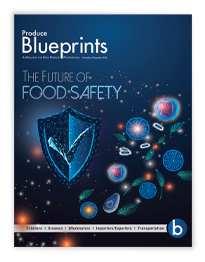Philabundance
Time and time again since its infancy, the PWPM’s merchants prioritize taking care of their own. On Galloway Street, not far from the market’s former location, is the nonprofit Philabundance hunger relief agency. The philanthropic organization serves impoverished individuals, many of them seniors and children, in nine counties.
In the city of Philadelphia alone, 240,777 meals were created in 2013 using donated produce to feed the hungry, according to Levin. “It is a truly great organization,” she says. “They make a huge impact on the food banks in our region.”
What is unique about Philabundance is it doesn’t value food donations by simply putting them on a scale (although M. Levin alone donates anywhere from a few hundred to 250,000 pounds of fruits and vegetables at a time). The organization is more concerned with the nutritional “weight” of products than actual poundage, and measures donations in kind with its “Quality Adjusted Statistical Pound” (QASP) system. Philly’s fresh produce trade, of course, repeatedly tips the QASP scales in quality and is a natural partner with Philabundance.
“Philabundance does a nice job,” comments Curtis. “Take Philabundance away, and there’ll be a lot of hungry people.” Efforts have been helped of late through the agency’s first store, opened in 2013. As the nation’s first nonprofit grocery store, Philabundance serves the Delaware Valley through its new 16,000-square-foot supermarket in Chester. Previously designated as a ‘food desert,’ Chester has lacked a viable source for fresh food—especially fresh fruit and vegetables—for more than a decade.
Another charitable initiative was recently in the news. Ephrata, PA-based Four Seasons Produce, Inc., a receiver and importer, donated a chunk of its summer profits (totaling more than $50,000) to help feed the hungry. The gift was divided between three area food banks and Philabundance.
Conclusion
Pinto Bros.’ Penza is enthusiastic about the future of the produce business in the PWPM. “It’s a great place to work. We hope everyone stays in business,” he shares. “We are bringing up the next generation here. I think they will flourish.”
“We have a rosy outlook in Philadelphia,” agrees Curtis. “As food safety mandates become more stringent, there are some players elsewhere in the country who will have to play catch-up. But, for some of them, they won’t be able to,” he predicts. “But we’re there. As time goes on, I believe more and more customers will seek us out, even if we are at a distance, because we’re ahead of the curve.”
The heritage of Philly’s produce industry makes a statement that nothing is too hard, or too big. Its legacy is evident in the current culture, as the PWPM sails boldly into the new era of commerce. Clearly, the industry here will continue to outshine itself.
Image: Shutterstock



